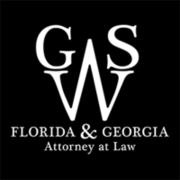(1) The owner of a lawfully erected sign that is governed by and conforms to state and federal requirements for land use, size, height, and spacing may increase the height above ground level of such sign at its permitted location if a noise-attenuation barrier is permitted by or erected by any governmental entity in such a way as to screen or block visibility of the sign. Any increase in height permitted under this section may only be the increase in height which is required to achieve the same degree of visibility from the right-of-way which the sign had before the construction of the noise-attenuation barrier, notwithstanding the restrictions contained in s. 479.07(9)(b). A sign reconstructed under this section must comply with the building standards and wind load requirements provided in the Florida Building Code. If construction of a proposed noise-attenuation barrier will screen a sign lawfully permitted under this chapter, the department shall provide notice to the local government or local jurisdiction within which the sign is located before construction. Upon a determination that an increase in the height of a sign as permitted under this section will violate an ordinance or a land development regulation of the local government or local jurisdiction, the local government or local jurisdiction shall, before construction:(a) Provide a variance or waiver to the local ordinance or land development regulations to allow an increase in the height of the sign;
(b) Allow the sign to be relocated or reconstructed at another location if the sign owner agrees; or
(c) Pay the fair market value of the sign and its associated interest in the real property.
(2) The department shall hold a public hearing within the boundaries of the affected local governments or local jurisdictions to receive input on the proposed noise-attenuation barrier and its conflict with the local ordinance or land development regulation and to suggest or consider alternatives or modifications to alleviate or minimize the conflict with the local ordinance or land development regulation or minimize any costs that may be associated with relocating, reconstructing, or paying for the affected sign. The public hearing may be held concurrently with other public hearings scheduled for the project. The department shall provide a written notification to the local government or local jurisdiction of the date and time of the public hearing and shall provide general notice of the public hearing in accordance with the notice provisions of s. 335.02(1). The notice may not be placed in that portion of a newspaper in which legal notices or classified advertisements appear. The notice must specifically state that:(a) Erection of the proposed noise-attenuation barrier may block the visibility of an existing outdoor advertising sign;
(b) The local government or local jurisdiction may restrict or prohibit increasing the height of the existing outdoor advertising sign; and
(c) Upon construction of the noise-attenuation barrier, the local government or local jurisdiction shall:1. Allow an increase in the height of the sign through a waiver or variance to a local ordinance or land development regulation;
2. Allow the sign to be relocated or reconstructed at another location if the sign owner agrees; or
3. Pay the fair market value of the sign and its associated interest in the real property.
(3) The department may not permit erection of the noise-attenuation barrier to the extent the barrier screens or blocks visibility of the sign until after the public hearing is held.
(4) This section does not apply to any existing written agreement executed before July 1, 2006, between any local government and the owner of an outdoor advertising sign.

